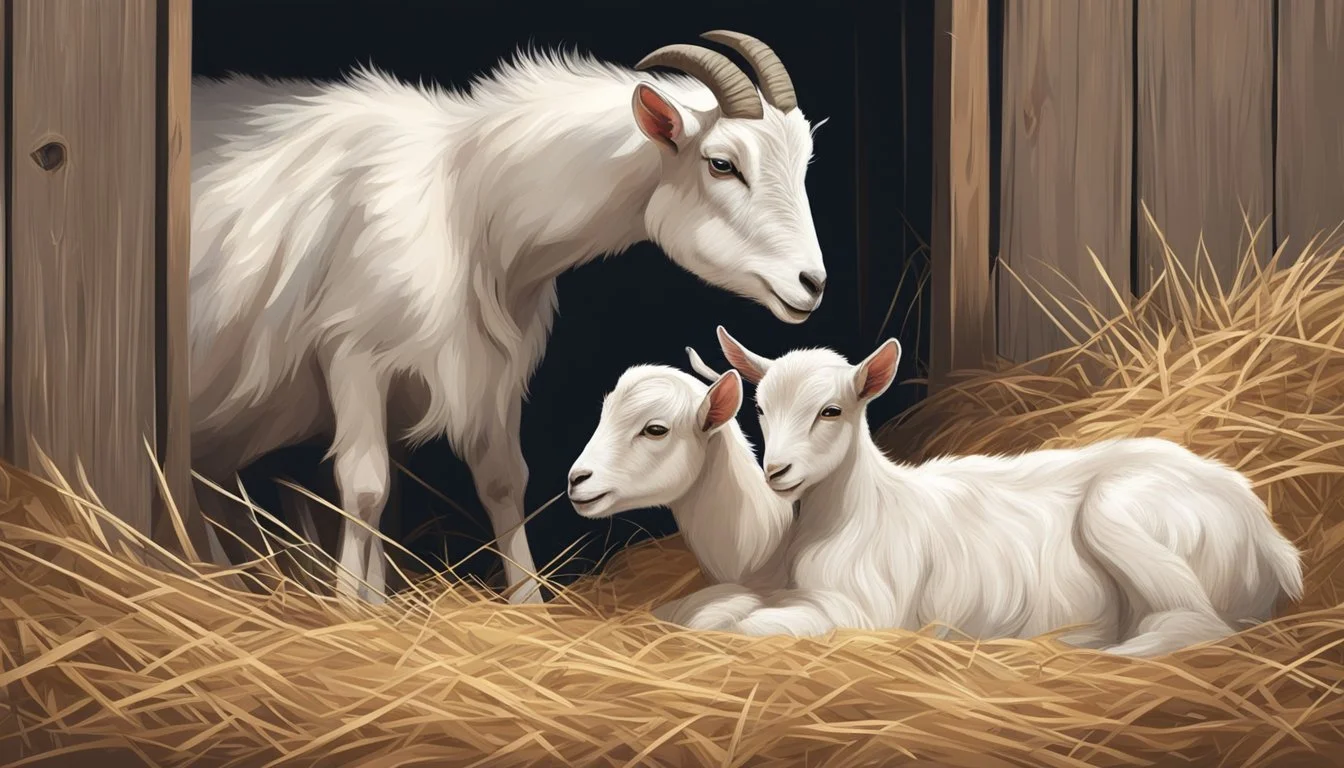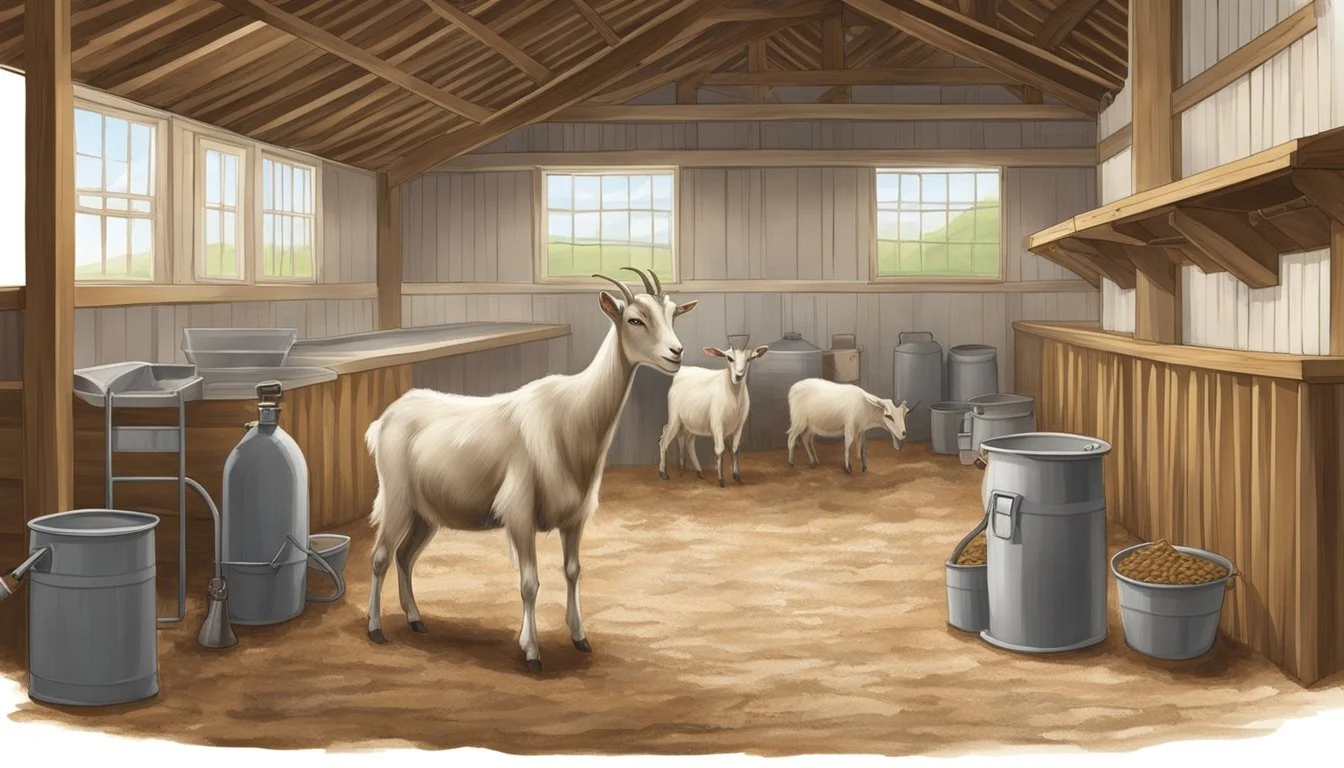What is the Breeding Cycle of a Goat?
Understanding Reproductive Patterns
Understanding the breeding cycle of a goat is crucial for successful goat breeding and reproduction management. Goats have a distinct reproductive cycle, which is the series of events that occurs from one estrus (heat) to the next. The average estrous cycle in goats is around 21 days, but it can range between 18 to 24 days depending on several factors including breed, environmental conditions, and individual health. During this cycle, there are optimal times for mating to enhance the chances of successful fertilization and subsequent kidding.
The breeding season for goats usually ranges from late summer through early winter. Specific traits of the breeding cycle, such as when a doe is most receptive to a buck, can vary among goat breeds. For instance, some breeds of dairy goats, such as the LaMancha and Saanen, have seasonal breeding patterns that are influenced by daylight length. Farmers breeding goats must pay attention to the signs of estrus in does, which include restlessness, vocalization, and a heightened interest in bucks. The period when a doe is in estrus typically lasts between 12 to 36 hours. Successful breeding strategies take into account these temporal aspects to align with the doe's fertility period, helping ensure a healthy and productive herd.
Goat owners should monitor their herd closely and provide adequate nutrition to support the breeding process. Nutritional management and overall health play significant roles in successful goat reproduction. Maintaining a calendar of breeding activities with precise timing of estrus and provision of care during gestation can dramatically improve the outcomes of the breeding program. Through attentive management and an understanding of goat reproductive cycles, farmers can optimize breeding schedules and enhance the growth and profitability of their goat herd.
Understanding Goat Breeding
The success of goat breeding hinges on a clear understanding of the reproductive cycle, determining optimal ages for breeding, and maintaining the health and genetics of the breeding stock.
The Breeding Cycle
The estrus cycle of a female goat, or doe, is typically 21 days, with estrus lasting 24 to 36 hours. The breeding season is usually in the autumn, triggered by shorter day lengths. Signs of heat include tail wagging, increased vocalization, and a mucous discharge from the vulva.
Determining the Right Age
For successful reproduction, a doe should be at least 60-70% of her adult weight, which is often achieved by around 8 months. Bucklings can reach puberty as early as 10 weeks old, but they should ideally be more mature before being used for breeding.
Breeding Readiness in Does and Bucks
Does should show clear signs of heat, such as a swollen vulva and mucous discharge for optimal breeding. Bucks in rut will have increased testosterone levels, manifesting in a strong odor and aggressive behavior, indicating high libido and semen quality.
Common Breeding Methods
The two main methods are hand breeding, where controlled mating occurs, and pasture breeding, where bucks and does coexist for natural mating. Artificial insemination is also utilized, offering genetic diversity without requiring bucks on the farm.
Health and Nutrition
Prior to breeding, does may require supplements like a copper bolus, and injections of vitamin E and selenium to ensure a healthy gestation. Proper nutrition plays a critical role in fertility and the health of both does and bucks.
Managing Breeding Stock
Maintaining high-quality breeding stock involves regular health checks and ensuring the welfare of both does and bucks. Kiko bucks and Nigerian dwarf goats are popular for their respective meat and miniature breed traits.
Understanding Genetics and Inbreeding
A solid grasp of genetics is crucial to avoid inbreeding which can lead to health and fertility issues. Diversifying the genetic pool within a herd is key to sustaining the quality of goats.
Breeding for Specific Traits
Selective breeding can enhance traits such as milk production in dairy goats or size in meat breeds. Breeders often use specific breed standards to achieve desired characteristics in their herds.
Breeding Records and Resources
Accurate breeding records are vital for tracking reproductive history and making informed breeding decisions. Numerous resources are available for goat owners in the United States, specifically aimed at enhancing the goat industry.
Goat Breeding Questions and Support
For additional support, goat owners can find a wealth of information and expert assistance from various agricultural extension services and online platforms that cater to the needs of the goat community.
Gestation and Kidding
The successful breeding cycle of a goat culminates in the gestation and kidding processes. Accurate management during these stages ensures the health and viability of both the doe and her offspring.
The Gestation Period
The typical goat gestation period lasts about 150 days, but can range from 145 to 155 days. Farmers and breeders often use a due date calculator to estimate when kidding will occur. During gestation, it's crucial to provide prenatal care, which includes a nutritious diet, proper housing, and a safe environment to support the development of the fetuses.
Preparing for Kidding
Kidding preparation begins well before the expected labor. Facilities should be clean and well-bedded to accommodate the doe comfortably. All necessary supplies, such as towels, iodine for umbilical cords, and a warming box for kids, should be on-hand. Observing the doe for signs of labor is part of anticipating the parturition event.
Monitoring Doe Health During Pregnancy
Ensuring the doe's health during pregnancy involves regular health check-ups, vaccinations as needed, and parasite control. Changes in the doe's demeanor, appetite, and physical condition can signify potential issues, warranting immediate attention.
Post-Kidding Care
Post-kidding care is critical for the health of the mother and her newborn kids. The doe should be monitored for any signs of postpartum complications, and kids should be checked for proper feeding and warmth. The first milk, or colostrum, is essential for the kids' immunity.
Managing Multiple Births
Goats commonly have multiple births. When kidding results in twins, triplets, or more, additional attention is required to ensure each kid receives adequate nourishment and care. Monitoring each kid's growth and health is particularly important when managing larger litters.
Focusing on these key aspects of doe pregnancy and kidding can substantially impact the well-being and productivity of the herd.
Lifecycle Management
Proper lifecycle management in goats is essential for ensuring a healthy herd, optimal growth, and successful breeding. This entails careful attention to each stage of development, from birth to the transition to breeding age, and maintaining health and productivity into their later years.
From Birth to Weaning
Birth to weaning is the initial stage where nutrition and care are vital for the survival of the kids. Kids should start receiving colostrum within the first hours of birth, followed by regular milk feeding. Weaning generally takes place between 8 to 12 weeks of age, at which point kids should be gradually introduced to solid foods.
Growth and Development Stages
During the growth and development stages, kids transition from a diet rich in milk to one that includes high-quality forage and grains. Proper nutrition during this stage is crucial for bone and muscle development. Doelings and wethers should be monitored for proper growth and weight gain to ensure they are on track for a healthy adolescence.
Weight and Health Monitoring
Consistent weight and health monitoring are critical components of goat care. Utilizing a goat weigh tape can provide an estimate of the animal's weight, which is essential for dosing medications properly. Regular screenings for signs of anemia or other conditions are important to maintain overall health.
Transition to Breeding Age
As goats approach puberty, signs of maturity such as the onset of estrus in females indicate they are reaching breeding age. It is important to determine the right time for breeding, considering factors like age, weight, and overall health. Most goats show readiness for breeding between 7 to 10 months of age.
Long-Term Health and Productivity
Maintaining long-term health and productivity involves regular veterinary care and management of diet to support optimal condition at each life stage. The lifespan of goats varies, but with proper care, productive breeding life can extend for several years, with does often breeding into their tenth year or later.
Facilities and Equipment
Effective goat breeding requires well-designed facilities and equipment that cater to the specific needs of the herd during the breeding cycle. These should ensure a controlled environment for breeding, proper nutrition, and the safety of both the animals and the farm staff.
Housing Requirements
Goats need shelter that protects them from the elements and provides enough space to move around. Housing should be well-ventilated but draft-free, with bedding kept dry to prevent the spread of disease. The size of the shelter must accommodate the herd size, usually providing about 10-15 square feet per goat to avoid overcrowding.
Breeding Specific Equipment
For controlled breeding, a breeding harness or buck apron can be used to monitor mating activities and prevent unwanted breeding. Artificial insemination (AI) kits may also be utilized for selective breeding programs. Such equipment helps streamline breeding efforts and improve herd management.
Feeding and Nutrition Systems
Nutrition plays a pivotal role in successful goat breeding. Feeding systems should allow for the distribution of a balanced diet, rich in energy, protein, vitamins, and minerals. Options include hay racks, grain feeders, and mineral dispensers. Automatic water systems ensure goats have constant access to fresh water, which is critical for their overall health and wellbeing.
Fencing and Security
Robust fencing is essential to contain goats within designated grazing areas and protect them from predators. It should be tall and sturdy enough to prevent escapes and provide protection against potential threats. Regular inspection and maintenance are crucial parts of herd management to uphold security and integrity of the fencing.




